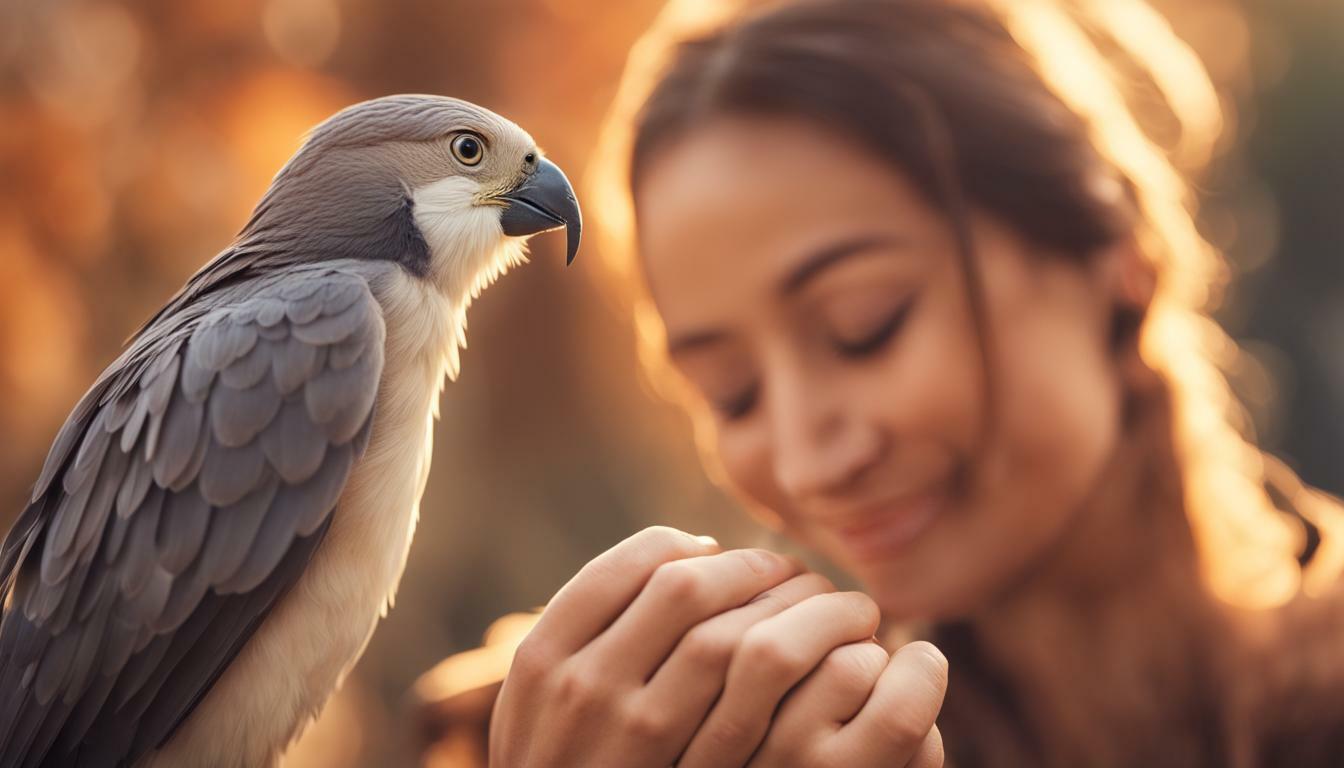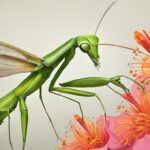If you’re a bird owner or considering getting a pet bird, you may wonder if they enjoy physical affection like being petted. Understanding bird behavior and preferences is crucial in creating a positive and comfortable petting experience for your feathered friend.
Birds are highly intelligent and social creatures with unique personalities and behaviors. While some birds may enjoy petting, others prefer to be left alone or may even be frightened by it. It’s important to recognize and respect each individual bird’s preferences and boundaries when it comes to physical affection.
Key Takeaways:
- Understanding bird behavior is key to creating a positive petting experience.
- Some birds may enjoy petting while others prefer to be left alone.
- Each bird has its own preferences and boundaries when it comes to physical affection.
Exploring Bird Behavior and Communication
As a bird owner, understanding your feathered friend’s behavior is essential for building a strong bond and ensuring their well-being. Interacting with birds is a unique experience, and it requires some knowledge of their behavior and socialization habits.
Communication is an essential part of a bird’s life, and it involves more than just talking to them. Birds communicate using a variety of body language, sounds, and behaviors that convey specific messages. For instance, flapping their wings or puffing their feathers might indicate excitement, while grinding their beaks might indicate contentment. Paying attention to your bird’s behavior can help you understand their moods and preferences better.
Birds are social creatures and thrive on social interaction. In their natural habitat, they flock together and engage in various activities such as grooming, playing, and singing. As a bird owner, you can help your bird stay happy and healthy by socializing with them. Socialization entails spending quality time with your bird, talking to them, playing with them, and, of course, petting them.
Interacting with Birds
When interacting with birds, it is best to let them come to you. Birds are cautious creatures, and they might feel threatened by sudden movements or loud noises. Instead, approach your bird calmly and let them approach you on their terms.
Offering your bird treats or toys can also help strengthen your bond and build trust. However, make sure the toys are safe and appropriate for your bird’s size and species. Providing perches and different types of toys can also help keep your bird stimulated and engaged.
Bird Socialization
Socialization is especially crucial for birds that live alone. Loneliness can lead to behavioral problems such as feather plucking, aggression, or depression. To prevent this, make sure to spend enough time with your bird each day. You can also consider getting your bird a companion if they seem lonely.
Birds also benefit from exposure to different environments and experiences. Taking your bird on walks or exposing them to nature can help reduce stress and anxiety and encourage exploration and curiosity. However, always supervise your bird and make sure they are safe.
Overall, understanding your bird’s behavior and socialization needs is critical for building a strong bond and ensuring their well-being. By interacting with your bird, providing stimulation, and creating a safe and nurturing environment, you can help them live a happy and healthy life.
Understanding Bird Preferences and Sensitivities
As with humans, each bird has its own personality and preferences when it comes to physical touch. Understanding your bird’s preferences and sensitivities is key to ensuring a positive petting experience.
Species-specific behaviors play a big role in how birds respond to petting. Some species, such as cockatiels, enjoy head scratches while others, such as finches, prefer to be left alone. Additionally, individual personality traits can influence a bird’s preferences, so it is important to observe your bird’s body language and reactions to determine what they enjoy.
When handling birds, it is crucial to establish trust and bond with them. This involves regular interaction and positive reinforcement, such as offering treats and speaking in a calm, soothing tone of voice. Respect your bird’s boundaries and avoid overstimulation, as this can cause stress and discomfort.
Proper bird handling techniques are also important for maintaining a comfortable and safe environment for both you and your bird. When reaching for your bird, approach from the side rather than from above, as this can mimic a predator’s attack. Avoid grabbing your bird’s wings or tail, as this can cause injury and discomfort. Instead, use a gentle but firm grip on their body.
In summary, understanding bird preferences and sensitivities is crucial for establishing a positive petting experience and building a strong bond with your bird. Remember to observe your bird’s behavior and body language, respect their boundaries, and use proper handling techniques.
The Art of Petting Birds: A Guide for Bird Owners
Petting your bird can be a wonderful way to show affection and bond with them. However, it’s important to do it correctly to ensure the experience is positive for both you and your feathered friend. Here are some guidelines to follow:
Identify comfortable petting spots
Not all birds like to be petted, and even those that do may have certain spots where they prefer to be touched. Watch your bird’s body language to identify areas they enjoy. For example, many birds like to be petted on their head or under their wings. Avoid touching areas that make them uncomfortable, such as their tail or feet.
Use appropriate touch techniques
Gently stroke your bird’s feathers in the direction they grow, rather than against the grain. Avoid applying too much pressure or pulling on their feathers. If your bird is hand-tamed, they may enjoy having their head or neck gently scratched. Never grab or squeeze your bird.
Recognize signs of enjoyment or discomfort
Learn to read your bird’s body language to recognize when they’re enjoying being petted and when they’ve had enough. Signs of enjoyment may include relaxed body posture, fluffed feathers, and vocalizations. Signs of discomfort may include tense body posture, raised feathers, or biting.
Provide positive reinforcement
When your bird responds positively to petting, reward them with treats or verbal praise. This will reinforce the positive experience and encourage them to continue to enjoy being petted. However, if your bird shows signs of discomfort or stress, stop petting immediately and provide them with space and quiet.
- Always wash your hands before and after handling your bird
- Never force your bird to be petted if they’re not comfortable with it
- Make sure your bird is relaxed and calm before attempting to pet them
Following these tips can help ensure that petting your bird is a positive experience for both of you. Remember, each bird is unique and may have individual preferences and boundaries when it comes to physical affection. Respect your bird’s boundaries and take the time to build a trusting relationship with them.
Building a Strong Bond with Your Bird
As a bird owner, you know that socialization and bonding are crucial for your feathered friend’s well-being. Petting your bird is one way to strengthen your relationship and ensure a positive bond. Here are some tips for effective bird handling and petting:
Respect Their Preferences
Just like humans, birds have individual preferences when it comes to physical affection. Some birds may enjoy gentle head scratches, while others may prefer chin rubs or back strokes. Observe your bird’s body language to identify their favorite petting spot and adjust your touch accordingly. Always keep in mind that some birds may not be comfortable with being pet at all, and that’s okay. Respect their boundaries and find other ways to bond with them.
Make It a Positive Experience
When petting your bird, use a soft touch and slow, gentle strokes. Avoid making sudden movements or touching sensitive areas. Offer your bird treats or verbal praise as a reward for good behavior during petting sessions. This will help to reinforce positive associations with being touched and strengthen your bond.
Establish Trust
Trust is key to a strong bond between you and your bird. Start by spending time with your bird every day, talking to them, and offering them treats. Gradually introduce petting as a way to bond with them. Always approach your bird calmly and avoid sudden movements or loud noises that could startle them. Be patient and allow your bird to come to you when they are comfortable.
Petting your bird can be a wonderful way to bond with them and improve your relationship. By respecting their preferences, making it a positive experience, and establishing trust, you can create a strong and rewarding bond with your feathered friend.
Conclusion
In conclusion, understanding avian affection is an important aspect of caring for your feathered friend. While birds can enjoy petting, it ultimately depends on their individual preferences and sensitivities. By delving into bird behavior, communication, preferences, and socialization, you can learn how to properly interact with your bird and create a strong bond through petting. Remember to always respect your bird’s boundaries and recognize signs of enjoyment or discomfort during petting. Using appropriate touch techniques and identifying comfortable petting spots can ensure a positive petting experience for both you and your feathered friend. With regular interaction and consistent trust-building, you can enhance communication and foster a deeper bond with your bird. So, do birds like being pet? The answer is not a simple yes or no. It varies from bird to bird, but by taking the time to understand your bird’s individual preferences and sensitivities, you can create a positive and enjoyable petting experience for both of you.Do Ducks Have Nails That Can Be Petted?
Duck anatomy and nail presence differ from most animals, as ducks have flat, broad nails that do not protrude. Although they might not be suitable for petting, these specialized nails are important for their ability to paddle through water efficiently and navigate varying terrains. Understanding duck anatomy helps us appreciate their unique adaptations.
FAQ
Q: Do birds like being pet?
A: Understanding bird behavior and preferences is crucial when determining whether birds enjoy being pet. While some birds may enjoy gentle petting, others may prefer different forms of interaction. It is important to observe their body language and respect their boundaries to ensure a positive experience for both the bird and the handler.
Q: How can I tell if my bird enjoys being pet?
A: Signs that a bird may be enjoying being pet include relaxed body language, leaning into the touch, and vocalizations such as soft coos or purrs. On the other hand, signs of discomfort or stress may include biting, squirming, or moving away from the touch. Each bird is unique, so it’s important to pay attention to their individual cues.
Q: What are some safe areas to pet a bird?
A: Birds have different preferences when it comes to being pet, but common areas that are generally safe to pet include the head, neck, and back. Avoid touching areas such as the belly or wings, as these can be sensitive or uncomfortable for the bird. Always start with gentle strokes and adjust your touch based on the bird’s response.
Q: How can I bond with my bird without petting?
A: Petting is just one way to bond with your bird. Other effective methods include spending quality time together, engaging in interactive play, and providing mental stimulation through toys and enrichment activities. Each bird has their own unique personality, so take the time to understand their preferences and find activities they enjoy.
Q: Can petting birds strengthen the bond between them and their owners?
A: Yes, petting can contribute to building a strong bond between birds and their owners. Positive physical interactions, when done correctly and in accordance with the bird’s preferences, can help foster trust, enhance communication, and deepen the overall relationship. It is important to approach petting with respect and understanding of the bird’s individual boundaries.











